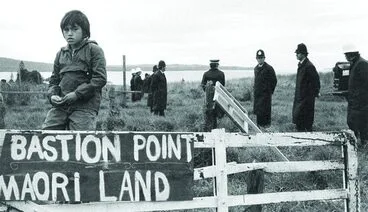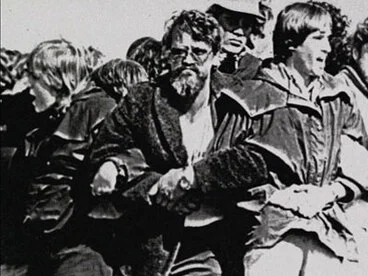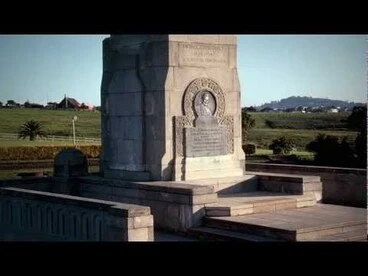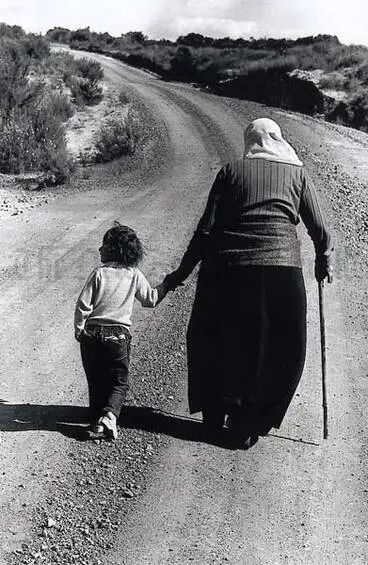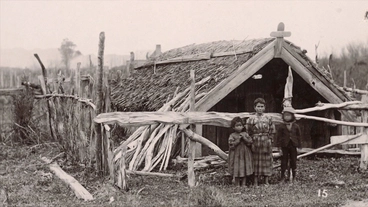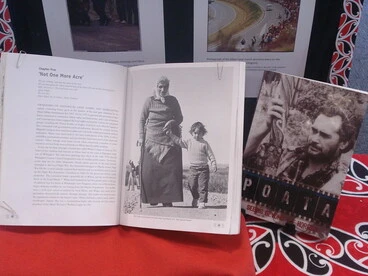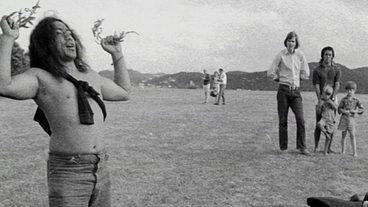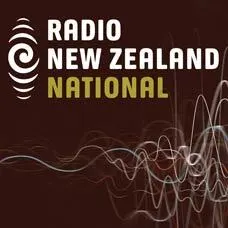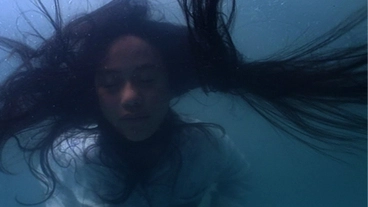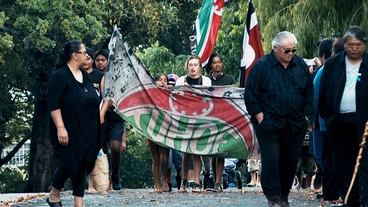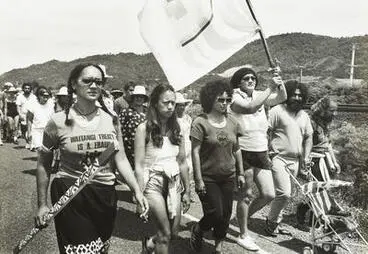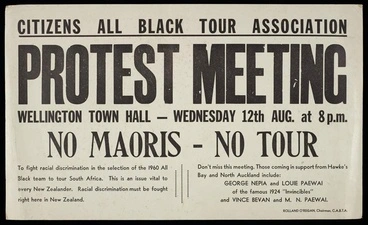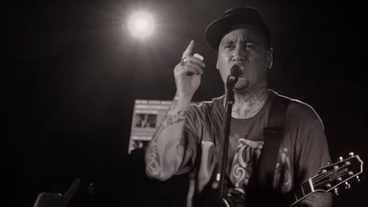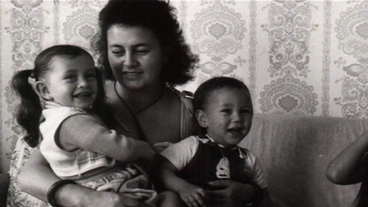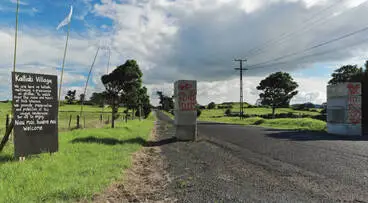Māori Protests
A DigitalNZ Story by National Library of New Zealand Topics
This set explores some of the major protests by Māori in Aotearoa New Zealand. This includes the events at Takaparawhā (Bastion Point), the 1975 Hīkoi, the Foreshore and Seabed protests and many others over recent years. SCIS no: 1943647
Bastion Point protesters at Parliament, Wellington
Alexander Turnbull Library
Bastion Point, Orakei, Auckland
Alexander Turnbull Library
Bastion Point - The Untold Story
NZ On Screen
Photograph of protesters on the Māori Land March, College Hill, Auckland
Alexander Turnbull Library
Remembering Bastion Pt: 'Straight out of a Nazi war movie'
Radio New Zealand
Reclaiming Bastion Point - Roadside Stories
Manatū Taonga, the Ministry for Culture and Heritage
"…it won’t be a lonely walk”
Services to Schools
Hōne Heke's protest
Manatū Taonga, the Ministry for Culture and Heritage
Te Matakite o Aotearoa - The Māori Land March
Services to Schools
Dog tax protest
Manatū Taonga, the Ministry for Culture and Heritage
Land protests
Manatū Taonga, the Ministry for Culture and Heritage
Eva Rickard, Raglan land occupation, 1978
Manatū Taonga, the Ministry for Culture and Heritage
Ripeka Evans and Donna Awatere
Manatū Taonga, the Ministry for Culture and Heritage
I Am the River
NZ On Screen
Tino rangatiratanga flag
Manatū Taonga, the Ministry for Culture and Heritage
'Not one acre more'
Christchurch City Libraries
Foreshore and seabed protest, 2004
Manatū Taonga, the Ministry for Culture and Heritage
Protest organisations
Manatū Taonga, the Ministry for Culture and Heritage
Ngā Tamatoa: 40 Years On
NZ On Screen
Operation 8
NZ On Screen
Protests want stop to Maori land law review
Radio New Zealand
Kaitangata Twitch - First Episode
NZ On Screen
The Price of Peace
NZ On Screen
Mass march from Turangawaewae to Waahi, 15 kilometres
Auckland Art Gallery Toi o Tāmaki
NATIVES IN PROTEST. PETITION TO THE KING. (Otago Witness, 25 March 1908)
National Library of New Zealand
Organising against racism, 1970s to early 21st century
Manatū Taonga, the Ministry for Culture and Heritage
Maori movement to protest Australian laws
Radio New Zealand
Photographs taken at a 2011 foreshore and seabed protest in Wellington
Alexander Turnbull Library
Foreshore and seabed protest, 2011
Manatū Taonga, the Ministry for Culture and Heritage
Maori Protest Against the Liquor Traffic. (Star, 15 April 1884)
National Library of New Zealand
THE AMERICAN FLEET. (Evening Post, 29 July 1908)
National Library of New Zealand
'No Maoris - No Tour' poster, 1959
Manatū Taonga, the Ministry for Culture and Heritage
Freedom to Sing
NZ On Screen
Children of the Revolution
NZ On Screen
Flags and protest
Manatū Taonga, the Ministry for Culture and Heritage
Parihaka
DigitalNZ
Protest signs, Ihumatao Quarry Road, Māngere, 2017
Auckland Libraries
'The Rise of the Morning Star' artistic intervention on Queen Street
Museum of New Zealand Te Papa Tongarewa
Hikoi returning from Waitangi
Services to Schools
Matene Waetford on inequality
Services to Schools
Development near sacred Māori site
Services to Schools
Matiaha Tiramorehu
Services to Schools
Protests over Hauraki treaty settlement signing
Services to Schools
Political and personal album of Ria Hall
Services to Schools
My old man's an All Black
Services to Schools
The fight for power
Services to Schools
Haka for Standing Rock
Services to Schools
Protests give Māori greater power
Services to Schools
Speech by Archbishop Rev. Whakahuihui Vercoe
Services to Schools
School students perform protest haka at Parliament
Services to Schools
Treaty protest posters: ‘The treaty is a fraud’
Manatū Taonga, the Ministry for Culture and Heritage
Protest waiata and protest haka
Services to Schools
Repudiation movement
Manatū Taonga, the Ministry for Culture and Heritage
Māori All Black protest
Services to Schools
Collecting the Standing Rock protest and why it’s important
Services to Schools
Māori passive protest against conscription
Services to Schools
The evolution of contemporary Maori protest
Services to Schools
Treaty and Protest
Services to Schools
Oceania interrupted protest for West Papua
West Papua, formerly a Dutch colony has been under the control of Indonesia since the early 1960s. Ever since then, West Papuans have been fighting for independence from the Indonesian regime. Pacific Island and Māori women, who are part of the Oceania Interrupted group, protested during the Positively Pasifika Festival in Wellington in 2015. Dressed in black pareo, with gags over their mouth and hands tied behind their backs, they hoped to raise awareness of the treatment of West Papuans in their fight for independence.
Alexander Turnbull Library
'Tonight - Tame Iti in "The Tempest".
Tame Iti is a well-known Tūhoe Māori activist who was part of many protests movements against the Crown. In 2007 he was arrested during the 2007 Urewera raids on charges of terrorism in New Zealand. Tame Iti had to seek approval from the New Zealand High Court to travel to London to be part of the production of the Shakespearean play The Tempest, which incidentally is about sovereignty issues. However, bail conditions meant he had to return to New Zealand – which made him very unhappy. The image is a tribute to cartoonist Michael Moreu who has combined image and a play of words for a bit of humour.
Alexander Turnbull Library
Anti-liquor protests
Māori called liquor ‘waipiro’ meaning ‘foul water’. Initially, very few Māori consumed alcohol when it was first introduced by the Europeans. However, alcohol soon became an issue in Māori communities. When restrictions on booze were first introduced around 1878, Māori were quick to support these measures. In 1908 the Māori Congress submitted a petition to the Premier that supply of liquor to Māori be absolutely prohibited or that they be given the power to vote on the question of whether or not liquor should be supplied to them.
National Library of New Zealand
Māori land protesters in Parliament grounds
It was a mixture of historical and contemporary land issues that moved Whina Cooper to head the famous Hīkoi or Land March of 1975. Consisting of various iwi and Māori protest groups the hikoi began in Te Hāpua in the far north and proceeded to Wellington. When they arrived, the protesters set up camp in Wellington’s parliament grounds. This image shows a group of protesters who set up a Māori embassy tent on the steps of Parliament. They refused to move and were evicted after two months.
Alexander Turnbull Library
Eva Rickard dancing at Moutoa Gardens
Eva Rickard was a well-known Māori rights and environmental campaigner. She was famous for leading the Raglan golf course protest. In this 1995 photograph, Eva dances at the Moutoa Gardens protest. The gardens had been built near or on the Pākaitore pā, a traditional place of trade for Māori. The protest lasted for 79 days and was based on the pacifist teachings of Niko Tangaroa, a church elder. In 1984 Eva led a hīkoi to Waitangi demanding the end to Waitangi Day celebrations until all treaty issues had been dealt with.
Alexander Turnbull Library
Participants in the 2004 Foreshore and Seabed Hikoi
In New Zealand, ‘seabed’ refers to the land under water and ‘foreshore’ is the land that gets covered by the tide. Traditionally Māori used this area for recreation, fishing, collecting seaweed, battles and landing their waka. In 2004 the government passed the Foreshore and Seabed Act which made the Crown the owner of the foreshore and seabed. Māori felt this overlooked their customary interests and rights as many Māori communities were established along New Zealand’s coastline. Thousands of people marched in protest to the Parliament in Wellington. Hone Harawira and Dr Pita Sharples were some of the famous names who joined in the hikoi in May 2004.
Alexander Turnbull Library
No offshore drilling. Kai moana NOT oil! No drill no spill!
Māori have always had a close relationship with te moana (the sea). Here they protest the news that Minister Gerry Brownlee has awarded New Zealand's first petroleum exploration permit over the Raukumara Basin to Petrobras International Braspetro B.V. The permit to explore oil in New Zealand was given just after the major Gulf of Mexico oil spill in 2010. This created a disaster of epic proportions. Here the minister tries to reassure the group that there will be legislation and environmental requirements in place to protect New Zealand if anything similar happened. Māori on the other hand, make it clear that they prefer kai moana (food from the sea) to ocean oil exploration.
Alexander Turnbull Library
Photographer John Miller, an activist’s lens
Services to Schools
Our trail of tears: the story of Ihumātao
Services to Schools
No Maoris No Tour
Auckland War Memorial Museum Tāmaki Paenga Hira
EDITORIAL No Maoris No Tour - (Te Ao Hou - No. 54 March 1966)
Alexander Turnbull Library
Restoring Rua Kēnana's legacy
Services to Schools
Hirini Melbourne — Music and Protest
Services to Schools
Eva Richard
Services to Schools
Protest at Mimiwhangata Lodge
Services to Schools
Statue of James Cook to be removed in Gisborne
Services to Schools
New Zealand Protests
DigitalNZ
The Dawn Raids
DigitalNZ
